Wild PassionfruitInsects of the Wild Passionfruit
There are 19 known Australian Capparis species, most growing in the tropical north of Australia, although there are a few that thrive in the arid parts of Australia. Among the species found in Central Australia are the Wild Passionfruit (Capparis spinosa var. nummularia).
A native Australian relative of the well-known caper bush, the Wild Passionfruit (Capparis spinosa var. nummularia) bears fruits from the beginning of summer until the first frosts of winter. The fruits are delicious and the flower buds can also be pickled. The large white flowers have a delicate scent and attract the white caper butterflies whose caterpillar can quickly eat and strip all the leaves from the bush. The bush does usually recover rapidly.
The following shows the flower, with the stamen (the male part of the flower), that surround the elongated gynophore, supporting the gynoecium (the part that develops into the edible fruit).
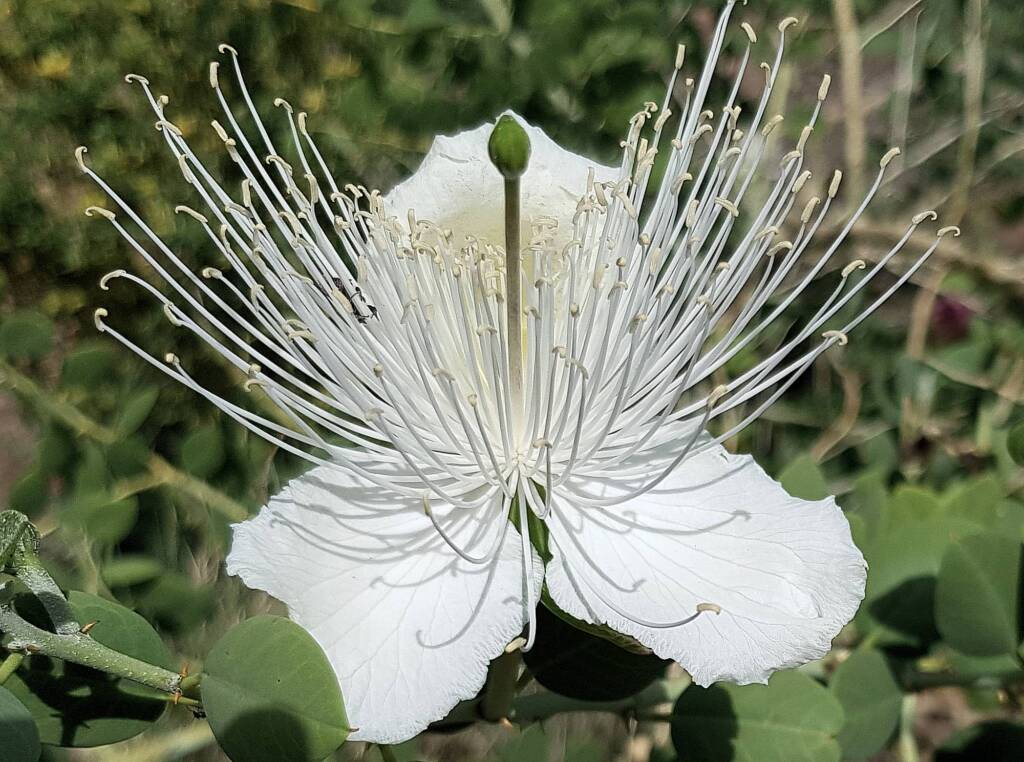

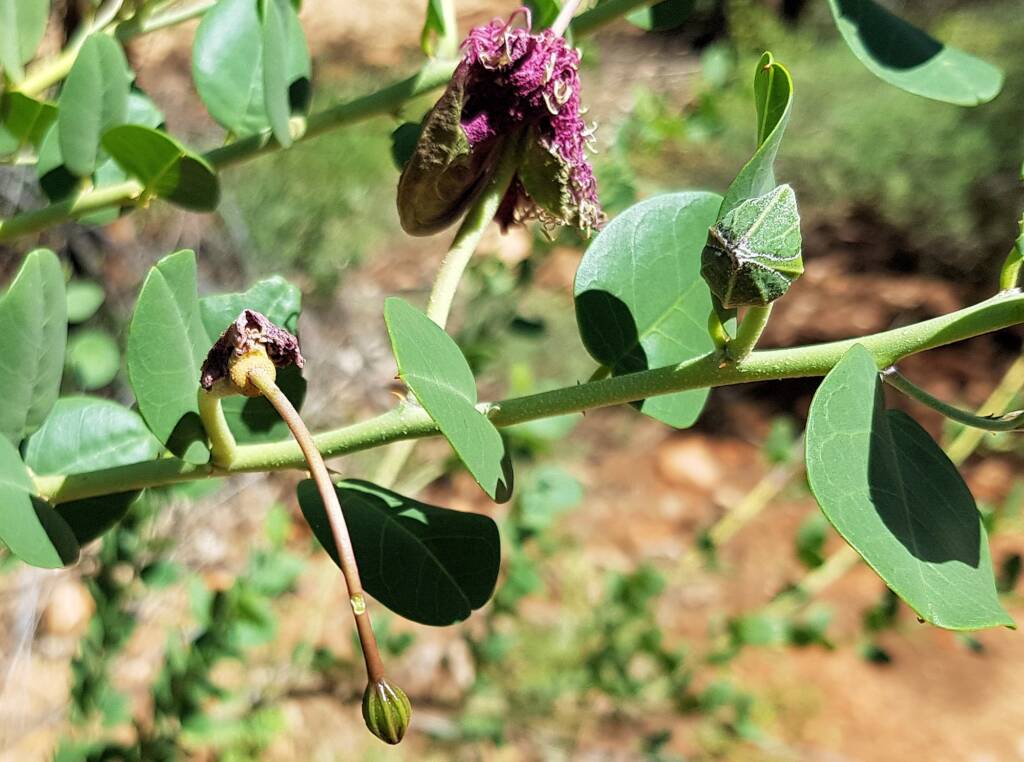

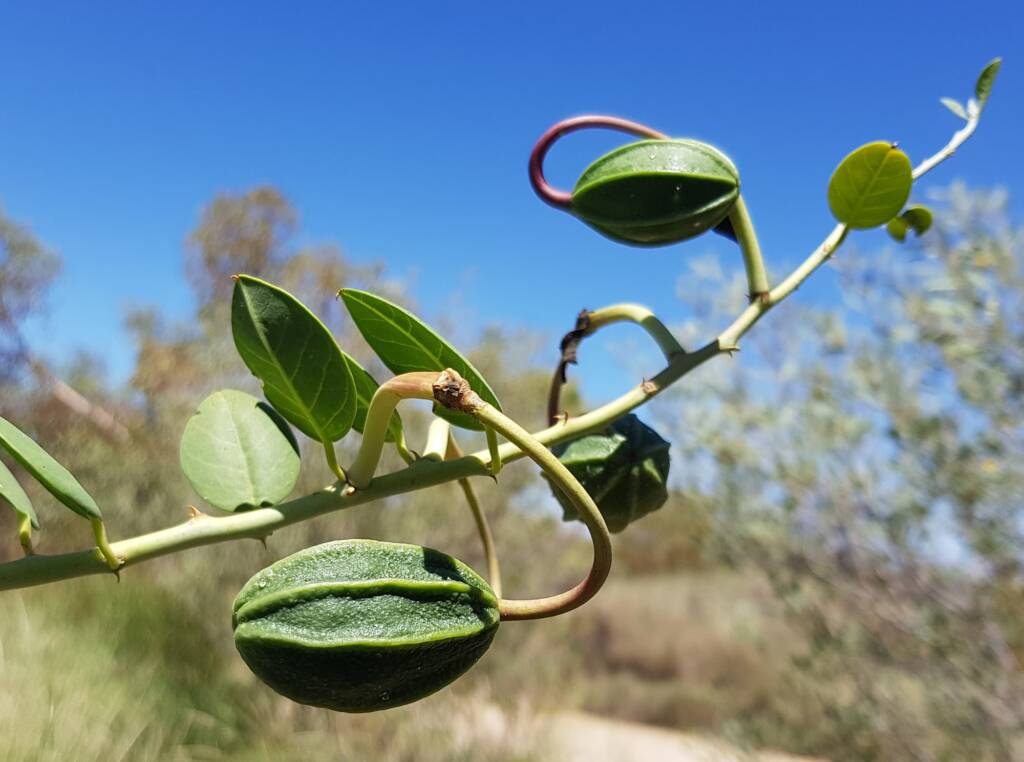
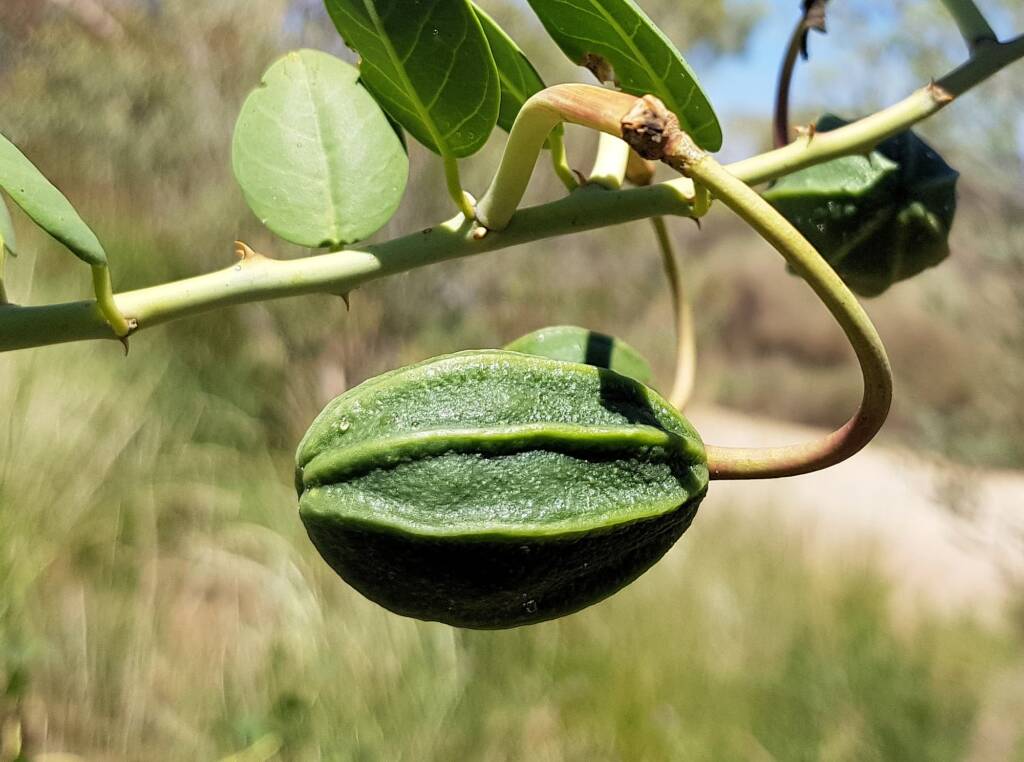

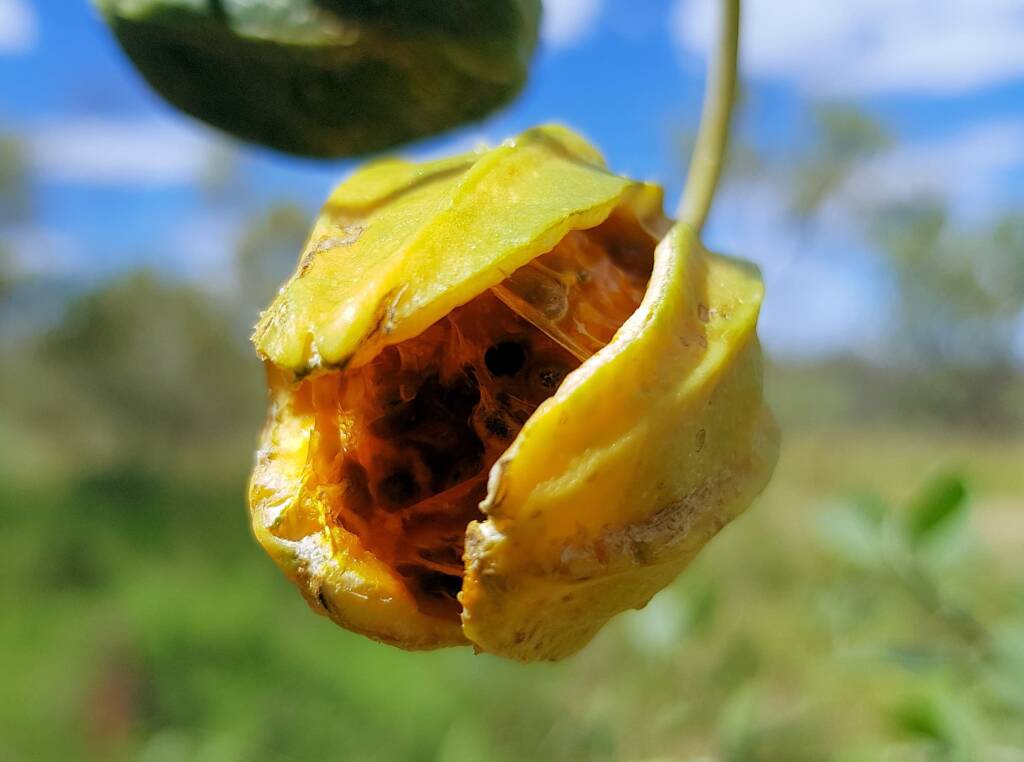

A great bush tucker plant that grows into a medium sized sparse to dense shrub. When the fruit ripens, the skin turns orange and splits open to reveal little black seeds. The fruit is best pick green to ripen off the bush for human consumption. The yellow pulp is consumed, with a taste similar to other passionfruit. The black seeds can be very bitter. The seeds are hot and spicy when crushed.
The plant grows naturally around the coast and inland along rivers and creeks in rocky soils in QLD, NT and WA.
Common name
Wild Passionfruit, caperbush, Merne arrutnenge (in local Arrernte language of Central Australia – pronounced arr-ORT-nung-a).
A number of creatures such as birds and insects take advantage of the caper bush. You will often see black ants all over the bush, especially when the fruit is ripening. Another insect that are often seen around the caper bush is the Caper White Butterfly (Belenois java teutonia) and the caterpillars.
Check out our blog A hard life…
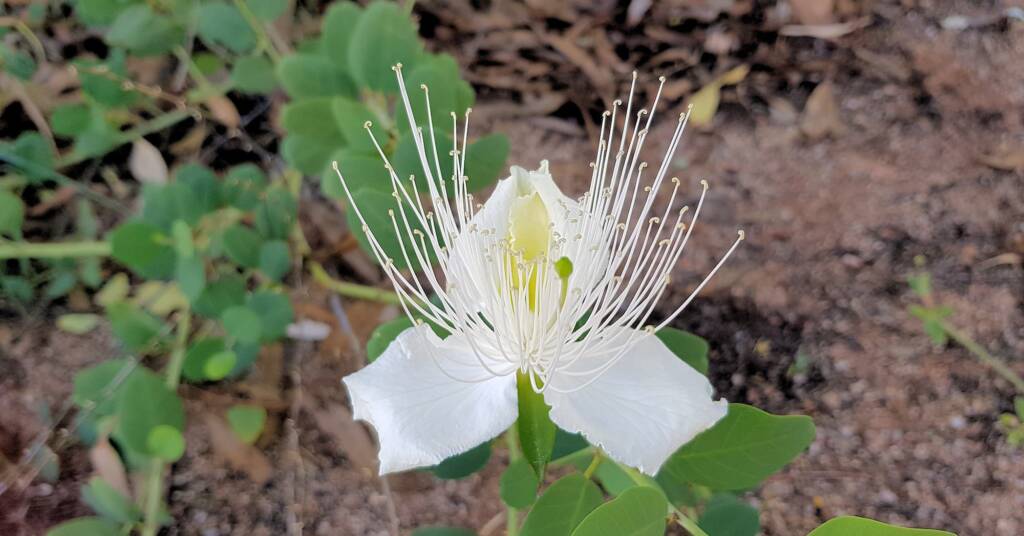
| WARNING Extreme care must be taken when identifying edible food plants and those used in bush medicine. Some bush foods are only edible at different stages of the plant cycle, or when treated appropriately. Bush medicine should only be used under the guidance of a qualified physician. Information here is only provided for research. You should always seek experts in the field to confirm the identification of the plant and whether they are edible or appropriate. |
- Scientific classification
- Kingdom: Plantae
- Clade: Tracheophytes
- Clade: Angiosperms
- Clade: Eudicots
- Clade: Rosids
- Order: Brassicales
- Family: Capparaceae
- Genus: Capparis
- Species: C. spinosa
- Subspecies: C. s. subsp. nummularia
- Trinomial name: Capparis spinosa subs
Wild PassionfruitInsects of the Wild Passionfruit
FloraFlora Index Acacia Anigozanthos (Kangaroo Paws) Annual Yellowtop Apium prostratum subsp. prostratum var filiforme Apple Bush (Pterocaulon sphacelatum) Australian Bluebell Australian Gossypium Banksia Batswing Coral Tree Billy Buttons Birdsville Indigo Blue Pincushion Bush Banana Callistemon Calothamnus quadrifidus Cape Honeysuckle Cassia fistula (Golden Shower) Cattle Bush Common Heath Crotalaria Darwinia wittwerorum (Wittwer’s Mountain Bell) Daviesia oppositifolia (Rattle-pea) Desert Oaks Drumsticks Eremophila Eucalyptus Ficus Flannel Cudweed (Actinobole uliginosum) Georges Indigo Goatshead Burr (Sclerolaena bicornis) Golden Everlasting Goodenia Gossypium Grass and Grasses Grass Trees Grevillea Grey Germander Hakea Kapok Bush (Aerva javanica) Lambertia sp Leptospermum MacDonnell Ranges Cycad Maireana scleroptera Mexican Poppy Minnie Daisy Mistletoe Family Nardoo Native Apricot Nicotiana megalosiphon subspecies sessilifolia Nuytsia floribunda Orange Spade Flower Orchidaceae Parakeelyas (Calandrinia) Pebble Bush (Stylobasium spathulatum) Perennial Yellow Top Pink Everlasting Pink Rock Wort Poached Egg Daisy Portulaca Proteaceae Ptilotus Quandong Resurrection Fern Rosy Dock Ruby Saltbush Santalum Solanum Spike Centaury Spinifex Storkbill (Erodum cygnorum) Striped Mint Bush Sturt’s Desert Pea Sturt’s Desert Rose Tall Saltbush Tangled Leschenaultia Tar Vine Tribulus eichlerianus Upside-down Plant Urodon dasyphylla Variable Daisy Waratah (Telopea) Wertabona Daisy White Cedar (Melia azedarach) White Indigo White Paper Daisy Wild Passionfruit Wild Stock Woolly-Headed Burr Daisy Woolly Bush Yellow-keeled Swainsona
Flora & FaunaFauna Flora Fauna Flora Funga Glossary Funga Related Topics Scientific Classification Backyard Wildlife Floral Emblems of Australia Wildflowers
